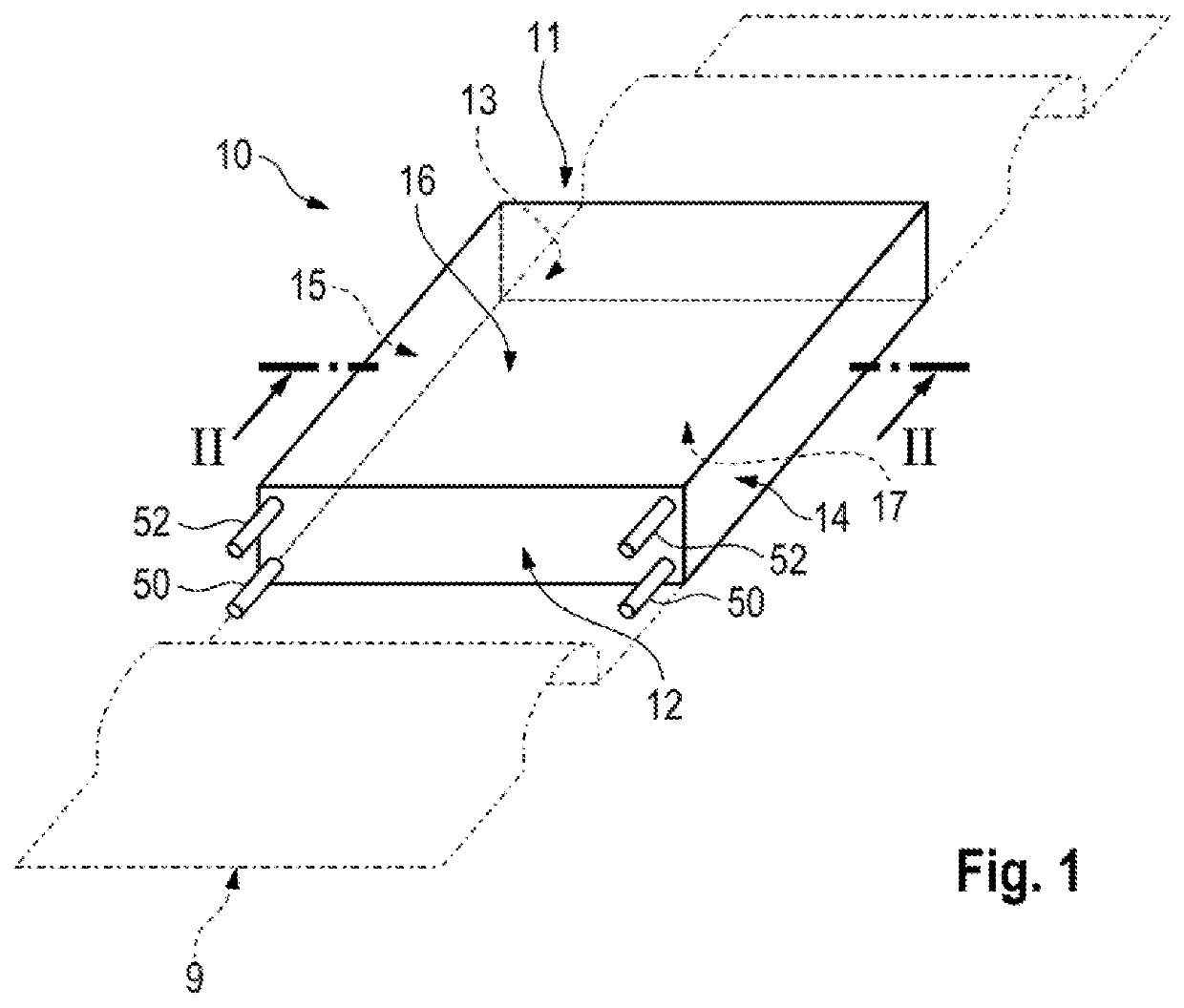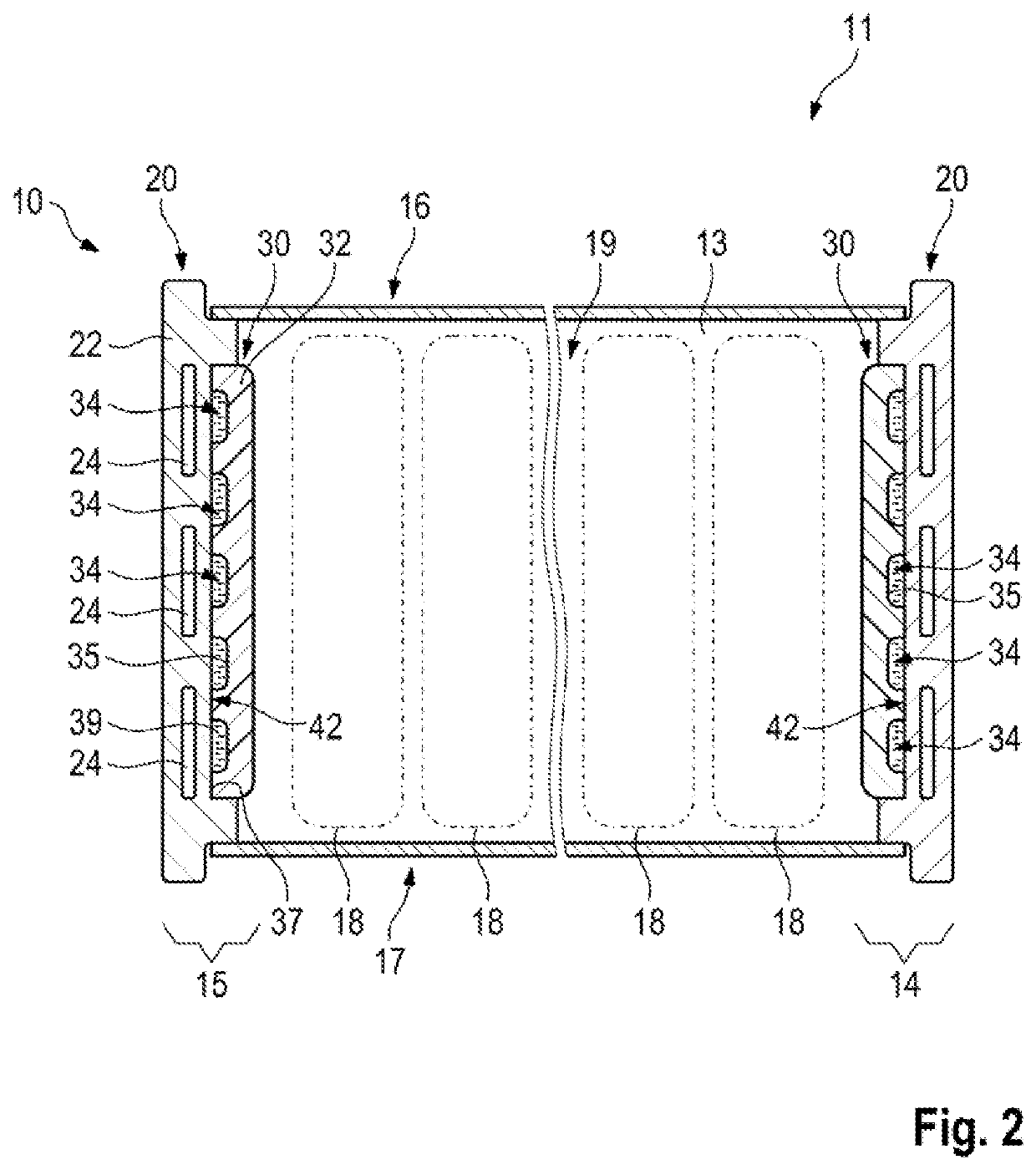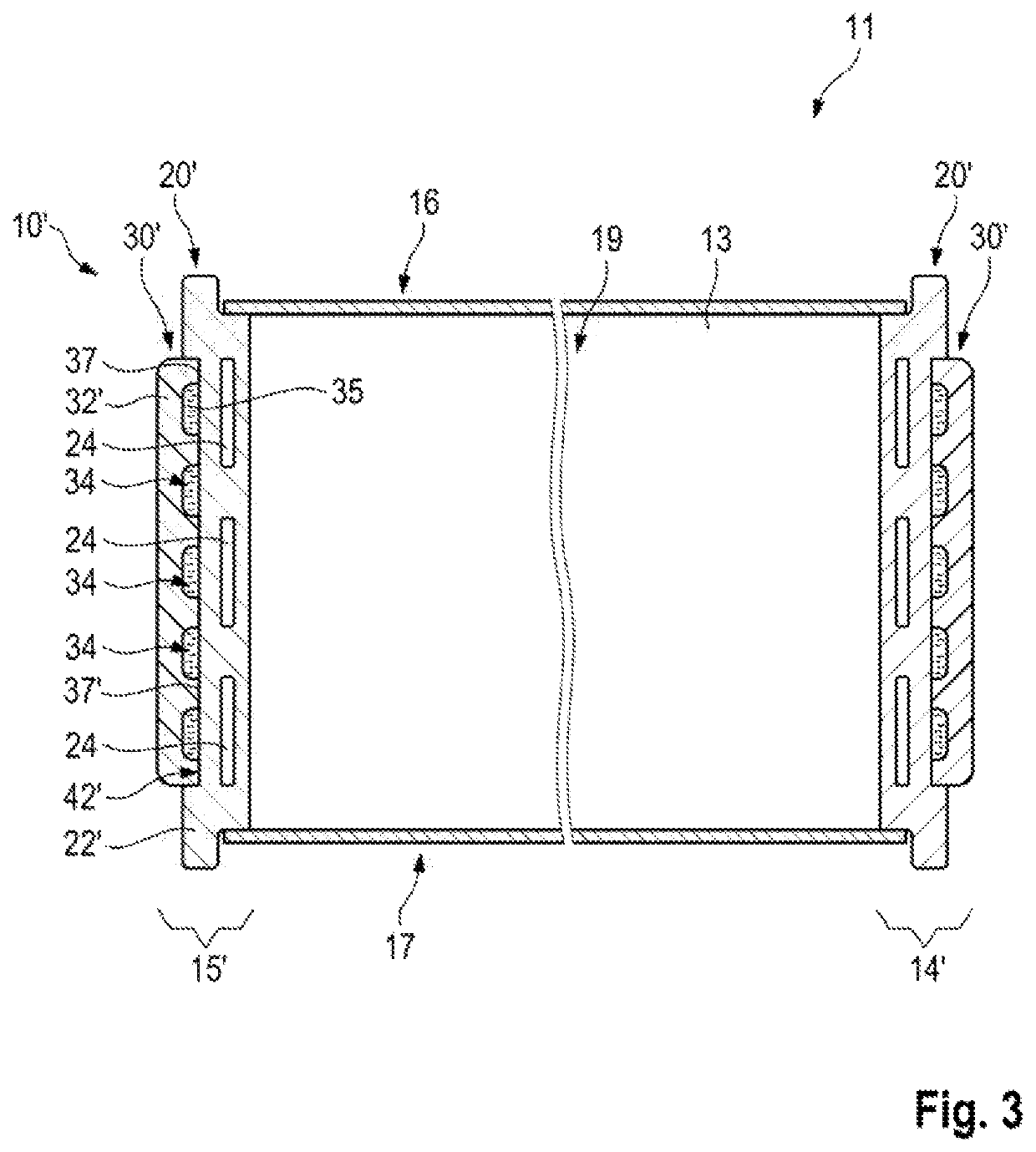Motor vehicle high voltage energy accumulator
a high-voltage electric and accumulator technology, applied in the direction of battery/fuel cell control arrangement, cell components, battery/fuel cell, etc., can solve the problems of insufficient structural strength of energy accumulator housings alone, fundamental fire risk, etc., and achieve high cooling performance and simple fluidic connection of energy accumulator to cooling circuit.
- Summary
- Abstract
- Description
- Claims
- Application Information
AI Technical Summary
Benefits of technology
Problems solved by technology
Method used
Image
Examples
second embodiment
[0041]FIG. 3 illustrates the motor vehicle high-voltage energy accumulator 10′, which differs from the energy accumulator 10 according to the first exemplary embodiment only in terms of the structure of the two side walls 14′, 15′. In the second exemplary embodiment, the cooling structure plate 30′ is arranged distally from the supporting structure plate 20′. Therefore, the supporting structure metal body 22′ has the receiving trough 42′ on the outside. The plastic plate body 32′ of the cooling structure plate 30′ is inserted into the receiving trough 42′ from outside. This exemplary embodiment of the side walls 14′, 15′ has the advantage that, in the event of a leakage at the interface between the supporting structure plate 20′ and the cooling structure as plate 30′, the cooling liquid running out cannot pass into the interior 19. Nevertheless, the direct cooling liquid wetting of the supporting structure plate 20′ makes it possible to achieve a high cooling performance.
third embodiment
[0042]FIG. 4 illustrates a motor vehicle high-voltage energy accumulator according to aspects of the invention in cross section. By comparison with the first two embodiments of FIGS. 2 and 3, in the embodiment illustrated in FIG. 4 the bottom wall 114′ and the top wall 115′ are designed as load-path-forming walls, whereas the remaining walls, namely the two side walls and the two end walls, are of thin-walled design and have only a small load path function, if any. Moreover, the structure of the top wall 115′ and of the bottom wall 114′ corresponds to the structure and the design of the side walls 15′, 14′ illustrated in FIG. 3. The reference signs which correspond with one another are each raised by 100 in FIG. 4 relative to the reference signs of FIG. 3. The embodiment in FIG. 4 thus represents a distal cooling analogous to FIG. 3. In a variation of the embodiment in FIG. 4, a proximal cooling as illustrated in FIG. 2 can also be used.
[0043]FIG. 5 illustrates a fourth exemplary em...
PUM
| Property | Measurement | Unit |
|---|---|---|
| thickness | aaaaa | aaaaa |
| operating voltages | aaaaa | aaaaa |
| wall thickness | aaaaa | aaaaa |
Abstract
Description
Claims
Application Information
 Login to View More
Login to View More - R&D
- Intellectual Property
- Life Sciences
- Materials
- Tech Scout
- Unparalleled Data Quality
- Higher Quality Content
- 60% Fewer Hallucinations
Browse by: Latest US Patents, China's latest patents, Technical Efficacy Thesaurus, Application Domain, Technology Topic, Popular Technical Reports.
© 2025 PatSnap. All rights reserved.Legal|Privacy policy|Modern Slavery Act Transparency Statement|Sitemap|About US| Contact US: help@patsnap.com



